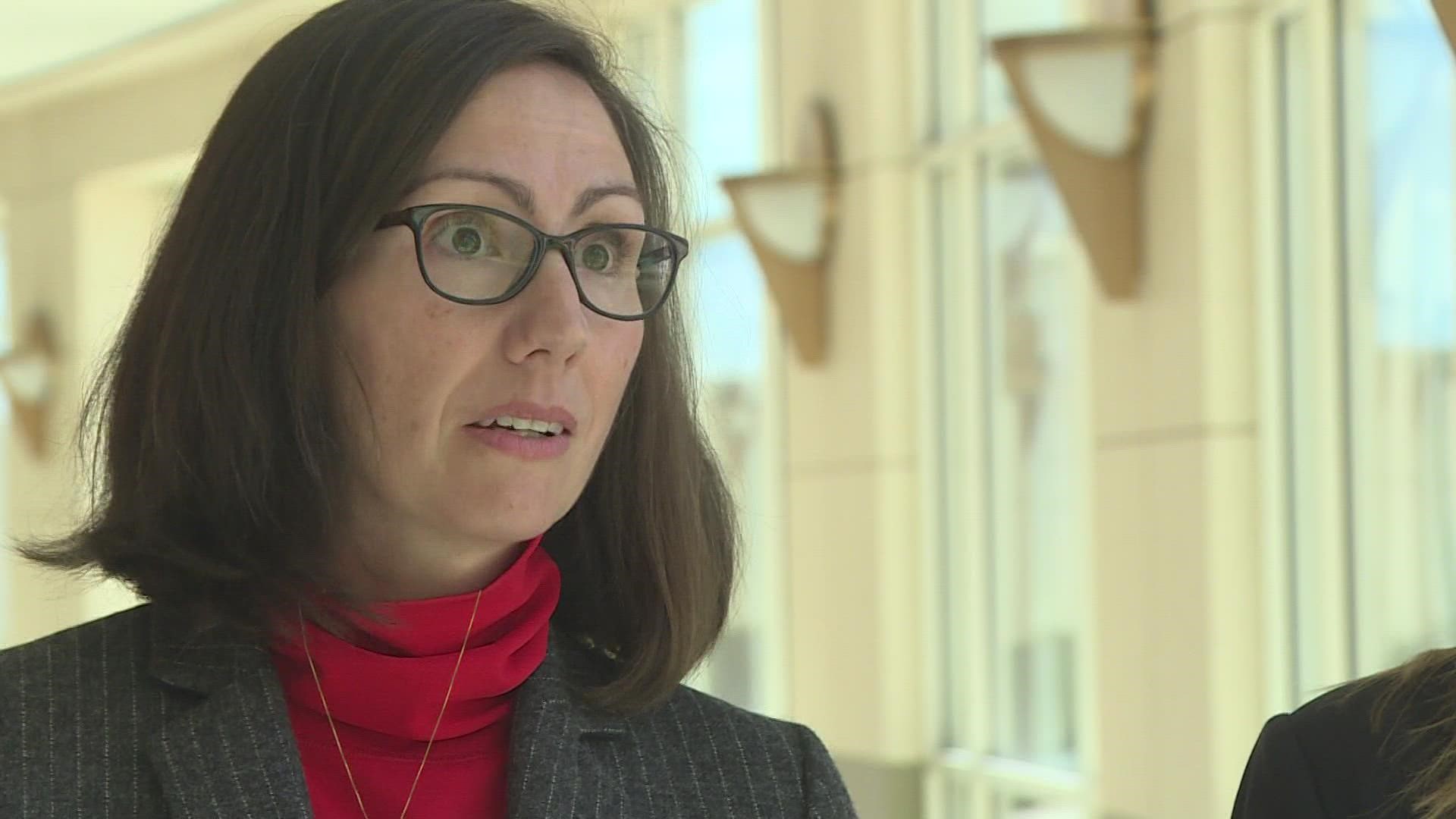JEFFERSON COUNTY, Colo. — DNA has been at the center of the ongoing trial in the 1984 rape and murder of a Lakewood woman. Monday, defense attorneys raised questions about the handling of evidence that has the suspect’s genetic material on it.
Alex Christopher Ewing, 61, faces first-degree murder charges in the killing of Patricia Smith, an interior decorator who was sexually assaulted and beaten to death with an auto-body hammer.
The long-unsolved investigation took a dramatic turn in the summer of 2018, when Ewing’s DNA was matched to semen left on Smith’s body, on the carpeting beneath it and on a child’s blanket that covered her head.
The trial has represented a primer on DNA – the so-called genetic fingerprint that is unique to each individual and shared only by identical twins.
Beginning in the late 1980s, the technology has existed to extract DNA from body fluids, such as blood and semen.
More recent technology has allowed for the extraction of DNA from skin cells left behind by the touch of a hand or even a cough.
Defense attorney Stephen McCrohan raised questions about both kinds of DNA during his cross-examination of Yvonne “Missy” Woods, an analyst with the Colorado Bureau of Investigation and an expert in forensic DNA.
The reason is simple: DNA from semen has been matched to Ewing. But testing of numerous items believed to have been touched by the killer did not reveal any of his genetic material.
Under McCrohan’s questioning, Woods acknowledged that semen is easier to transfer if it is wet.
McCrohan had earlier noted that investigators ran a vacuum over the carpeting in an effort to pick up evidence. With Woods on the stand, he asked whether it was possible to have transferred semen from one item to another with a vacuum.
Woods agreed it was possible.
She also agreed it was possible that someone stepping on a semen stain could transfer it to another piece of evidence by stepping on it.
McCrohan spent part of his cross-examination focused on a swatch of carpeting on which Smith’s body was found. It had been tested multiple times over the years.
Woods acknowledged that testing she did on part of the carpeting from underneath Smith’s body yielded “nothing of evidentiary value” in 1999. When she tested a different section of the same carpeting in 2010, she located semen and extracted DNA from it.
Asked to explain how she found something that earlier testing missed, Woods noted that in her original testing she did not use every portion of the carpeting. By 2010, lights used to locate body fluids had advanced, making it easier for her to observe it and then test it.
“I have a better indication of what I was looking at,” Woods said.
McCrohan also focused on evidence that was tested for so-called “touch” DNA, including the murder weapon, Smith’s boots and clothing, and her purse and billfold – all of which are believed to have been handled by the killer.
In answering a series of questions, Woods acknowledged that touch DNA testing was undertaken in 2010 on the murder weapon and Smith’s clothing. None of it yielded Ewing’s DNA.
McCrohan also questioned a CBI practice of discouraging testing for touch DNA on cases from before 2006. The reason CBI took that position, Woods said, was that evidence handling practices were not as rigorous as they are now. For example, investigators did not wear gloves in some cases when handling evidence.
“It is being used routinely on current cases where the proper protective gear was used in the collecting and prior processing of the evidence,” Woods said.
Under questioning from prosecutor Katharine Decker, Woods hit on a point prosecutors have raised several times.
“If someone is wearing gloves, it will reduce or eliminate the possibility of touch or transfer DNA,” Woods said.
She also said that even the presence of touch DNA is not proof positive that a particular individual handled that item. For instance, a person can shake hands with someone else, or touch a drinking fountain, and then transfer that foreign DNA onto another item.
“I don’t even know how many DNA profiles are on my hands right now, because I went to the bathroom and I touched a bunch of door handles,” Woods testified.
The defense needs the jury to conclude that the failure to find Ewing’s DNA on the hammer used to kill Smith, and on her clothing, boots, and purse, shows he wasn’t involved – and that there’s an innocent explanation for the presence of his DNA, taken from semen, at the scene. Perhaps, for example, police investigators inadvertently cross-contaminated evidence.
The prosecution needs the jury to conclude that there’s no innocent explanation for the DNA, taken from semen, that was found at the scene and matched to Ewing – and that the failure to find his DNA on the murder weapon and Smith’s belongings can be explained. Perhaps, for example, the killer wore gloves.
The prosecution is expected to wrap up its case sometime Tuesday, and the defense is expected to begin calling witnesses in the afternoon.
RELATED: DNA is at the heart of trial in woman's 1984 murder -- for both the prosecution and the defense
RELATED: Man accused of 1984 hammer killing goes on trial in case where both sides stress DNA evidence
Ewing was convicted last summer of murdering Bruce and Debra Bennett and their 7-year-old daughter, Melissa, on Jan. 16, 1984 – six days after Smith’s killing. A judge sentenced him to three consecutive life sentences.
He will be eligible for parole after 20 years of each sentence, but since they are running back-to-back-to-back, it is expected Ewing will die in prison.
Judge Tamara Russell ruled that the prosecution can introduce evidence from the Bennett killings but that jurors can consider it only for identification, modus operandi and common plan.
The jurors have not been told Ewing was convicted in the other case.
Contact 9Wants to Know investigator Kevin Vaughan with tips about this or any story: kevin.vaughan@9news.com or 303-871-1862.
SUGGESTED VIDEOS: Bennett family murders



